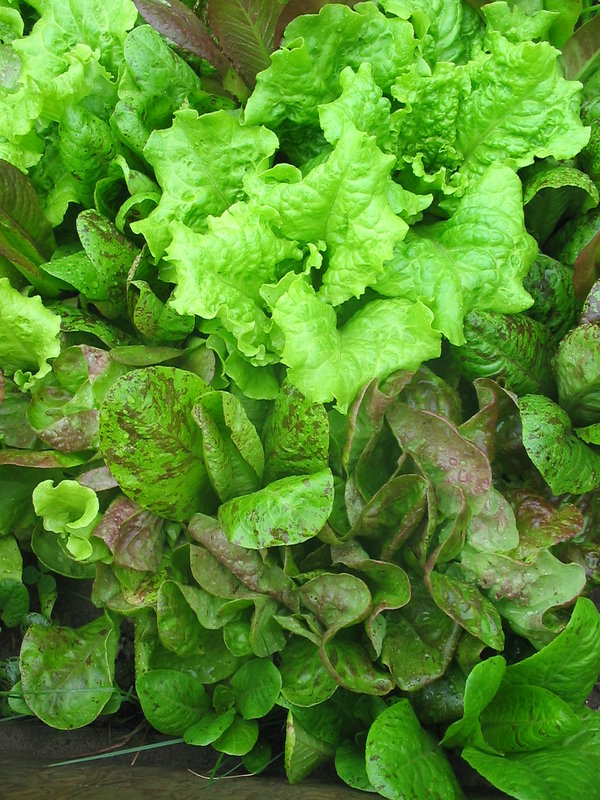Roguing and Selection for Lettuce Seed Crops

Paul Hrycyk
Despite these differences in when you should be out in the field pulling plants, one time is undoubtedly the most important and has the greatest impact on the purity of the next generation of seeds – before flowering. Removing off-types and plants with low vigour from the population before flowering means that unwanted DNA isn’t contributed to the gene pool of the next generation.
For certain crops, like squash, it’s not realistic to expect to remove all the off-types before flowering as you may not notice them until the fruit has started to develop. However, other crops, like lettuce, have gone through nearly all their stages of growth before they flower. If you’re growing lettuce for seed, you’ve got all season and several key growth stages when it’s easy to spot off-types and rogue them out. By the time lettuce plants start flowering, the only ones left are your favorites and top performers. For lettuce, you can essentially eliminate off-types in one generation through this process so it’s worth putting in the effort. Here’s how that year would go for lettuce:
After your seedlings have sprouted, you should walk through your plot and complete a cycle of roguing when the plants have 4-6 true leaves. At this point you should be paying attention to two main criteria – plant vigour and leaf colour/pattern. It’s always good practice to remove the weakest 10% of seedlings; look for the slowest growers and last to germinate. With 4-6 true leaves showing, you can evaluate the leaf colour and colour pattern. You should be familiar with the varietal norm and make your selections based on this but you can also look for leaves that have colours or patterns unlike the rest of the population and remove them.
Your second walk-through and roguing cycle should be done when the lettuce plants have 10-12 true leaves. At this point, several characteristics can be evaluated to spot off-types – the degrees of lobing, savoying and blistering all contribute to the overall leaf shape. The plant stature, how upright it is and how many leaves are touching or laying on the ground, should be used as another selection criterion. The leaf texture, its thickness and crispness, should also be observed in order to spot and remove off-types. It may be better to wait until closer to plant maturity when evaluating this particular characteristic.
The third roguing cycle should be done when you would normally harvest the lettuce as the criteria at this point are mainly focused on flavour. Select the plants based on sweetness, lack of bitterness or any other distinctive flavours that are characteristics of the variety. You can also select for the degree of heading and tightness of the head.
The last two criteria to select and rogue for are early bolting and disease resistance. Selecting for disease resistance is an ongoing process. Anytime you’re in the field, and certainly during the other roguing cycles, you should remove any plants showing signs of disease. As for selecting for early bolting, caution must be taken with long-season varieties, such as crispheads, not to select so strongly that the variety no longer produces flowers and seeds in shorter growing seasons.
You can see why lettuce is a particularly agreeable crop for roguing and selection. By the time the plants flower, you’ve had a generous amount of time and several growth stages to make observations and selections.
If you happen to be growing Jester or Bronze Arrowhead lettuce this year we’ve got some brand new forms to follow with all the varietal characteristics outlined. Following this guide will help growers of these varieties across Ontario to produce seed that is true to type and enhance the ability of Vegetable Seed Producers Network (VSPN) members to create a high quality supply of seeds from cooperating farms.
**
This project was funded in part through Growing Forward 2, a federal-provincial-territorial initiative. The Agricultural Adaptation Council assists in the delivery of Growing Forward 2 in Ontario.

Paul Hrycyk is the coordinator of the Vegetable Seed Producers Network (VSPN).
Not yet a member?
An annual membership to Seeds of Diversity gives you access to our seed exchange, seed grow-out programs, and our online news.

We depend on donations to do our work.

Thank you for your support!
